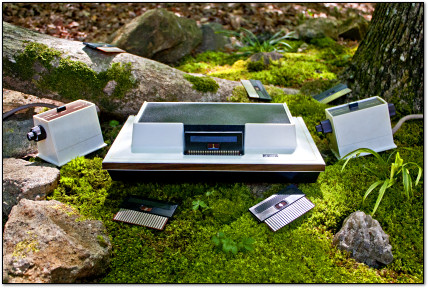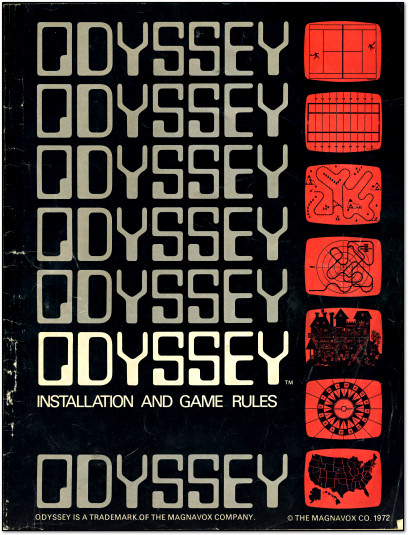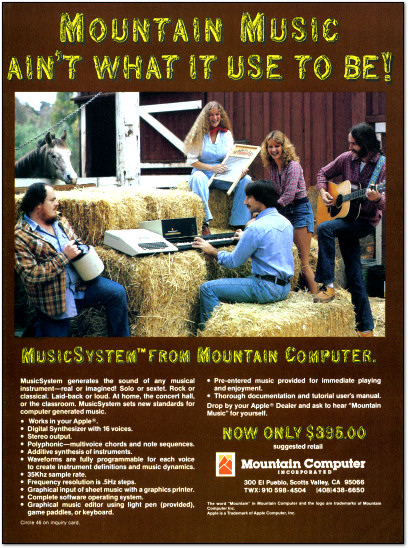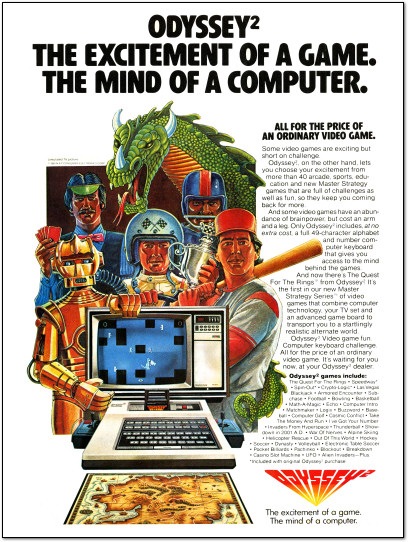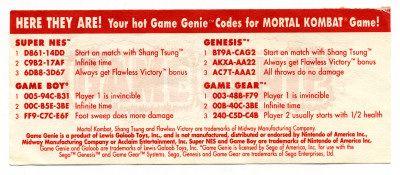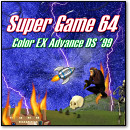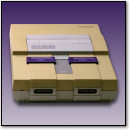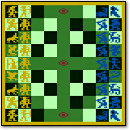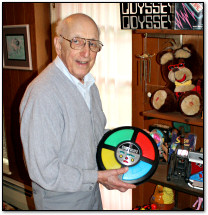 Two days ago, I flew up to New Hampshire to visit Ralph H. Baer, the Father of Video Games, at his home in Manchester.
Two days ago, I flew up to New Hampshire to visit Ralph H. Baer, the Father of Video Games, at his home in Manchester.
During my brief stay, Baer was a gracious host and a gentleman to the highest degree. We discussed life, philosophy, WWII, video games, and more. Best of all, he showed me an archive of his inventions that he keeps in his basement.
I made the trip because Baer, along with two associates, invented home video games in 1967. That work culminated in the Magnavox Odyssey, the world’s first commercial video game console, in 1972.
Baer, who turned 90 in March, has also been a freelance toy and game developer since the late 1970s. His biggest hit in that field is no doubt Simon, a toy which you might know by its iconic saucer shape and playful electronic melodies.
After examining some of his creations, I challenged him to a game of Ping Pong on a replica of the Brown Box (the 1968 video game prototype that inspired the Odyssey). We didn’t keep score, but his hands are surprisingly nimble. By the way, he’s a very good driver too. Even at 90, his mind seems twice as sharp as someone one third his age.
Yesterday morning, just before I left to fly home, I took the following panoramic shots around Ralph’s house with my Sony camera. He gave me permission to publish these images, so I thought you might enjoy them.
The geometry in each photo is warped because the camera flattens about 180 degrees of perspective into a rectangular image. Still, I love the effect. Here they are:
—
 Ralph’s office, where he writes and checks his email. He likes Macs.
Ralph’s office, where he writes and checks his email. He likes Macs.
 Ralph’s basement lab, where he has worked on his inventions for over 50 years.
Ralph’s basement lab, where he has worked on his inventions for over 50 years.
 Ralph’s main basement. To the right sits his shelved display of toy inventions.
Ralph’s main basement. To the right sits his shelved display of toy inventions.
—
Overall, it was an amazing trip. I am not the first journalist, nor will I be the last, to visit him. But I still feel lucky that I had a chance to explore the world of a renowned inventor up close.
Some time in the future, I will write about the visit in more detail. But for now, I thought you might enjoy checking out these photos.
